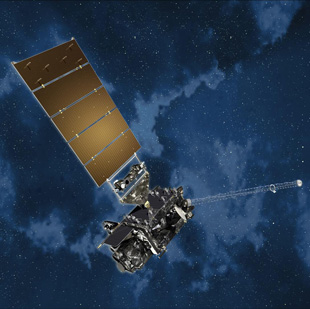by Jeff Rosenfeld, BAMS Editor in Chief, and Bob Rauber, AMS Publications Commissioner
Since this week has been declared Peer Review Week, the publishing blog, “Scholarly Kitchen,” is devoting a series of posts about the manuscript evaluation process that you might dread or love, depending on where you sit as an author, editor, or reviewer. They kicked off discussions with a round table on the future of peer review. You’ll find in that blog the usual gamut of projections about peer review—from business as usual to wholesale revolution. Given the many innovations in publishing lately, nobody seems to know what will happen next in this centuries-old tradition in science.
One thing the participants all seemed to agree on, however: in one form or another, peer review is here to stay. As Alice Meadows, director of communications for ORCID, the researcher identification consortium, puts it, “It is hard to imagine scholarly communication without some form of peer review.”
Those of us who have served as AMS editors will not be surprised by that sentiment, and not just because we rely so heavily on reviewers to provide their input into the publishing process. We know how valuable peer review is because the authors tell us.
It is not unusual to see an author’s final revisions arrive accompanied by a note to the editor saying ““Please thank the reviewers.” And it is not unusual to find “anonymous reviewers” thanked in the acknowledgements of published papers.
This happens even though not all of these authors have been entirely happy throughout the review process. Reviews usually mean authors spend additional time on a paper they thought was fine when they first submitted it. Despite that, the authors know their reviewers deserve thanks, and the authors freely give it.
They do this because they find that peer review is not just “essential to the communication of science.” Peer review is, itself, scientific communication of the best kind.
We often picture peer review as criticism. One set of anonymous experts tells another expert how to write their article, what to say, and what not to say.
That’s hardly a model for scientists communicating with other scientists. It sounds downright regressive, actually—an intrusive but necessary form of telling authors what the standards are and where to throw out the junk. Thumbs up, or thumbs down.
But actually, more often than not, the thumb wiggles and points the way to success. Editors notice that when the review process is going well, the reviewers are not simply dictating terms for acceptance for the authors. What happens instead is conversation. It is often an even more intimate and honest exchange than one can get from colleagues down the hall. And like any good conversation, it involves iterations. Reviews go to authors, and the authors who take them seriously often reply unexpectedly, forcing reviewers to think again. In the best cases, reviewers and authors—and the editors who facilitate their two-way exchange—learn from each other and adapt.
The evidence of this conversation is in those citations AMS gives when naming the recipients of our Editor’s Awards each year. Sift through the Annual Meeting banquet programs and you’ll find many words of praise for an iterative communication. For example, the 2016 Journal of Hydrometeorology Editor’s Award went to W. Justin Baisden for “a series of rigorous and detailed reviews … resulting in a substantially improved paper.” Similarly, both Andrew Stewart (for the Journal of Atmospheric and Oceanic Technology) and Matthew Kumjian (for Monthly Weather Review and Weather and Forecasting) were cited for how “constructive” their reviews were. And the Journal of Applied Meteorology and Climatology singled out Tanya Spero Otte for “thought provoking reviews that led to significant manuscript improvements.”
Clearly this is what editors want, and this is what makes peer review a conversation. The manuscripts improve, and both sides learn. People often ask why scientists devote so much effort and time—often unpaid and at extremely inconvenient moments—to formulating reviews and considering authors’ responses. Like any scientific communication, it’s because reviewers, authors, editors, and ultimately readers are all headed for the same goal: learning something new from each other. That’s what makes these conversations so lively, so intense, and so rewarding.
It is striking how frequently the review process in AMS journals becomes a conversation. It happens so often that it’s the norm, and we sometimes don’t stop to think how extraordinary it is that busy people volunteer their time to contribute so fundamentally to the work of others. Thumbs up, then, for Peer Review Week, for peer review itself, and in particular for the thousands of volunteers who answer the call from editors, day in, day out, to review for AMS journals!
 The intent is to obtain a community consensus on what observations we need to advance our research, applications, products and services. This information, hopefully from you and the 2000 other presenters at this meeting, will be organized and summarized
The intent is to obtain a community consensus on what observations we need to advance our research, applications, products and services. This information, hopefully from you and the 2000 other presenters at this meeting, will be organized and summarized
